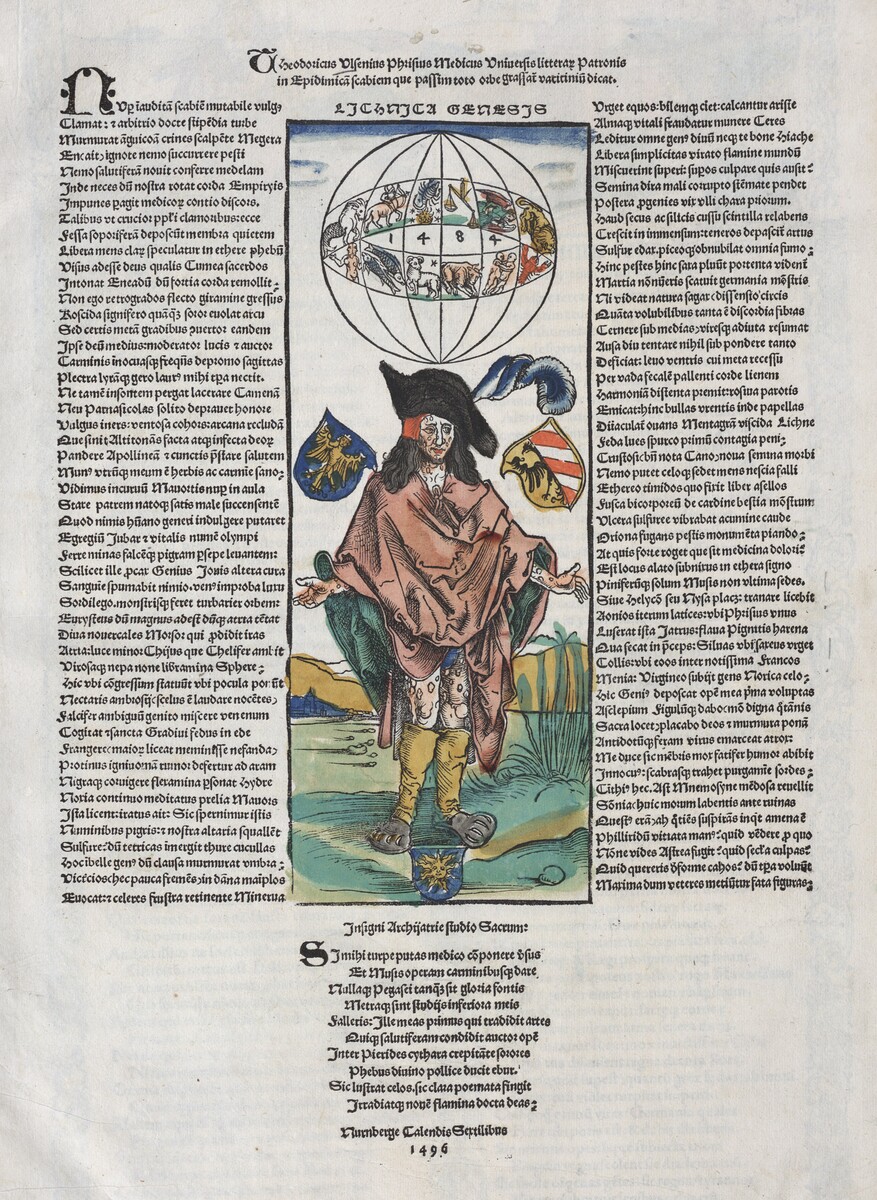Abstract
The “Syphilitic Man” image appeared first in this 1496 broadsheet
surrounded by a Latin text educating its readers about the disease. The
text was written by Dirck Ulsen[ius] (ca. 1460-1508), a Dutch a
physician and humanist. The attribution of this image to the artist
Albrecht Dürer, one of the most significant German artists of the
Northern Renaissance, is disputed. The image, one of the first printed
scientific depictions of syphilis, shows a mercenary soldier afflicted
with syphilis and highlights the concern about the syphilis outbreak of
the time, likely introduced by mercenary soldiers. During the
Reformations, efforts to control the spread of syphilis were closely
linked to the demonization of prostitutes as spreaders of the
disease.
